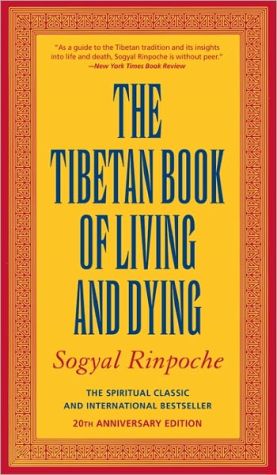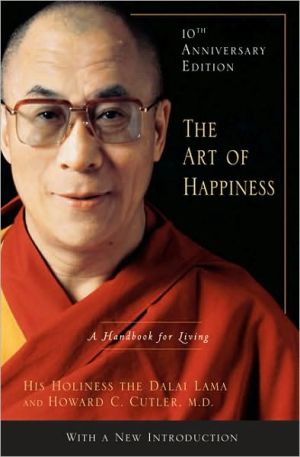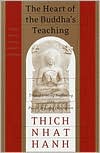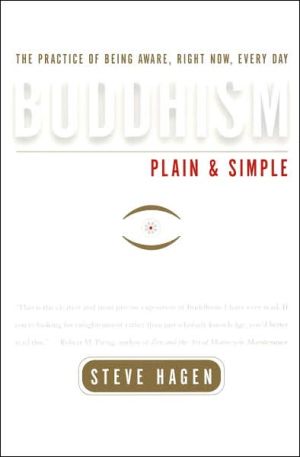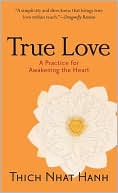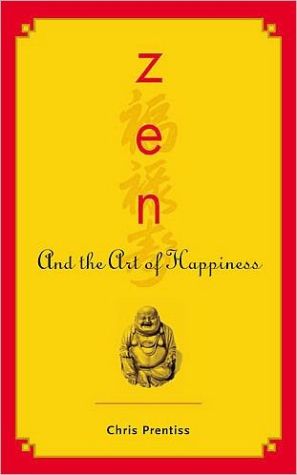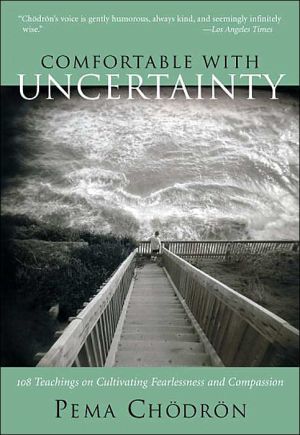Tibetan Book of Living and Dying: The Spiritual Classic and International Bestseller
"What is it I hope for from this book? To inspire a quiet revolution in the whole way we look at health and care for the dying, and the whole way we look at life and care for the living."\ This acclaimed spiritual masterpiece is widely regarded as one of the most complete and authoritative presentations of the Tibetan Buddhist teachings ever written. A manual for life and death and a magnificent source of sacred inspiration from the heart of the Tibetan tradition, The Tibetan Book of Living...
Search in google:
This acclaimed spiritual masterpiece is widely regarded as one of the most complete and authoritative presentations of the Tibetan Buddhist teachings ever written. A manual for life and death and a magnificent source of sacred inspiration from the heart of the Tibetan tradition, The Tibetan Book Of Living and Dying provides a lucid and inspiring introduction to the practice of meditation, to the nature of mind, to karma and rebirth, to compassionate love and care for the dying, and to the trials and rewards of the spiritual path. New York Times Book Review Sogyal Rinpoche...has delivered the Tibetanequivalent of 'The Divine Comedy.' One could imaginethat this is what Dante might have written had he beena Buddhist metaphysician rather than a Christian poet.
Chapter One\ \ \ In the Mirror of Death\ My Own First Experience of death came when I was about seven. We were preparing to leave the eastern highlands to travel to central Tibet. Samten, one of the personal attendants of my master, was a wonderful monk who was kind to me during my childhood. He had a bright, round, chubby face, always ready to break into a smile. He was everyone's favorite in the monastery because he was so good-natured. Every day my master would give teachings and initiations and lead practices and rituals. Toward the end of the day, I would gather together my friends and act out a little theatrical performance, reenacting the morning's events. It was Samten who would always lend me the costumes my master had worn in the morning. He never refused me.\ \ Then suddenly Samten fell ill, and it was clear he was not going to live. We had to postpone our departure. I will never forget the two weeks that followed. The rank smell of death hung like a cloud over everything, and whenever I think of that time, that smell comes back to me. The monastery was saturated with an intense awareness of death. This was not at all morbid or frightening, however; in the presence of my master, Samten's death took on a special significance. It became a teaching for us all.\ Samten lay on a bed by the window in a small temple in my master's residence. I knew he was dying. From time to time I would go in and sit by him. He could not talk, and I was shocked by the change in his face, which was now so haggard and drawn. I realized that he was going to leave us and we would never see himagain. I felt intensely sad and lonely.\ Samten's death was not an easy one. The sound of his labored breathing followed us everywhere, and we could smell his body decaying. The monastery was overwhelmingly silent except for this breathing. Everything focused on Samten.\ Yet although there was so much suffering in Samten's prolonged dying, we could all see that deep down he had a peace and inner confidence about him. At first I could not explain this, but then I realized what it came from: his faith and his, training, and the presence of our master. And though I felt sad I knew then that if our master was there, everything would turn out all right, because he would be able to help Samten toward liberation. Later I came to know that it is the dream of any practitioner to die before his master and have the good fortune to be guided by him through death.\ As Jamyang Khyentse guided Samten calmly through his dying, he introduced him to all the stages of the process he was going through, one by one. I was astonished by the precision of my master's knowledge, and by his confidence and peace. When my master was there, his peaceful confidence would reassure even the most anxious person. Now Jamyang Khyentse was revealing to us his fearlessness of death. Not that he ever treated death lightly: He often told us that he was afraid of it, and warned us against taking it naively or complacently, Yet what was it that allowed my master to face death in a way that was at once so sober and so lighthearted, so practical yet so mysteriously carefree? That question fascinated and absorbed me.\ Samten's death shook me. At the age of seven, I had my first glimpse of the vast power of the tradition I was being made part of, and I began to understand the purpose of spiritual practice. Practice had given Samten an acceptance of death, as well as a clear understanding that suffering and pain can be part of a deep, natural process of purification. Practice had given my master a complete knowledge of what death is, and a precise technology for guiding individuals through it.\ \ After Samten died we set off for Lhasa, the capital of Tibet, a tortuous three-month journey on horseback. From there we continued our pilgrimage to the sacred sites of central and southern Tibet. These are the holy places of the saints, kings, and scholars who brought Buddhism to Tibet from the seventh century onward. My master was the emanation of many masters of all traditions, and because of his reputation he was given a tumultuous reception everywhere we went.\ For me that journey was extremely exciting, and has remained full of beautiful memories. Tibetans rise early, in order to make use of all the natural light. We would go to bed at dusk and rise before daybreak, and by first light the yaks carrying the baggage would be moving out. The tents would be struck, and the last ones to come down were the kitchen and my master's tent. A scout would go ahead to choose a good camping place, and we would stop and camp around noon for the rest of the day. I used to love to camp by a river and listen to the sound of the water, or to sit in the tent and hear the rain pattering on the roof.\ We were a small party with about thirty tents in all. During the day I rode on a golden-colored horse next to my master. While we rode he gave teachings, told stories, practiced, and composed a number of practices specially for me. One day, as we drew near the sacred lake of Yamdrok Tso, and caught sight of the turquoise radiance of its waters, another Lama in our party, Lama Tseten, began to die.\ The death of Lama Tseten proved another strong teaching for me. He was the tutor to my master's spiritual wife, Khandro Tiering Chodron, who is still alive today.\ The Tibetan Book of Living and Dying. Copyright © by Sogyal Rinpoche. Reprinted by permission of HarperCollins Publishers, Inc. All rights reserved. Available now wherever books are sold.
ForewordPrefacePt. 1Living1In the Mirror of Death32Impermanence153Reflection and Change284The Nature of Mind415Bringing the Mind Home566Evolution, Karma, and Rebirth827Bardos and Other Realities1028This Life: The Natural Bardo1119The Spiritual Path12710The Innermost Essence150Pt. 2Dying11Heart Advice on Helping the Dying17312Compassion: The Wish-Fulfilling Jewel18713Spiritual Help for the Dying20914The Practices for Dying22315The Process of Dying244Pt. 3Death and Rebirth16The Ground25917Intrinsic Radiance27418The Bardo of Becoming28719Helping after Death29920The Near-Death Experience: A Staircase to Heaven?319Pt. 4Conclusion21The Universal Process33922Servants of Peace356Appendix 1: My Teachers367Appendix 2: Questions about Death371Appendix 3: Two Stories378Appendix 4: Two Mantras386Notes392Selected Bibliography406Acknowledgments409Index415
\ Los Angeles TimesRinpoche's teachings have much to offer.... His down-to-earth tone, peppered with songs and poetry from Buddhist sages, takes away much of the intense fear of death and makes it seem like an old friend.\ \ \ \ \ New York Times Book ReviewSogyal Rinpoche...has delivered the Tibetanequivalent of 'The Divine Comedy.' One could imaginethat this is what Dante might have written had he beena Buddhist metaphysician rather than a Christian poet.\ \ \ San Francisco Chronicle Book ReviewA magnificent achievement. In its power to touch the heart, to awaken consciousness, it is an inestimable gift.\ \ \ \ \ Publishers WeeklyThis modern interpretation of the Tibetan Book of the Dead outlines a path for spiritual growth. (May)\ \ \ \ \ Library JournalHolding that the modern belief that there is no afterlife is responsible for much ecological destruction, and inspired by The Tibetan Book of the Dead, Sogyal discusses Tibetan Buddhist teaching . The author also discusses Tibetan Buddhism's implications for this life and for the spiritual path, its aid to the dying, and its relevance to contemporary issues such as euthanasia, near-death experience, suicide, and the hospice movement. Sogyal teaches the practice of mindfulness, meditation, and involvement in contemporary life. His background in traditional Buddhism, Western religion, and scientific traditions make him a helpful guide eager to help the world attain peace. Recommended for academic and public libraries with collections in interfaith dialog.\ \
